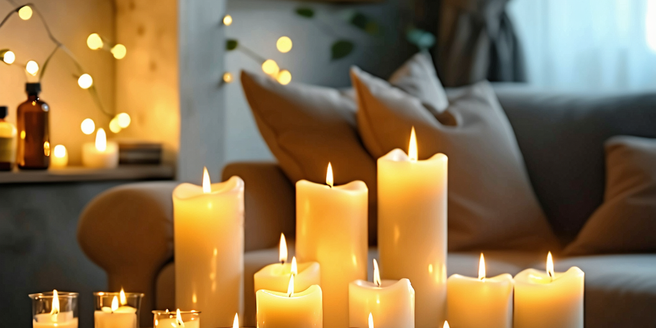Home Fragrance Samples

Understanding the Different Types of Home Fragrance Samples
When diving into home fragrances, it’s essential to distinguish between the various sample types available. Generally, fragrance samples are categorized into vials, roll-ons, and wax melts. Vials hold a small amount of liquid fragrance perfect for quick trials. Experimenting with these different samples allows you to discover new scents and decide on your favorites. It’s always a good idea to try a few different types to see what works best for you. Roll-ons provide a more controlled application and are often used to gauge how a scent lingers. Wax melts, on the other hand, offer a more immersive experience, releasing aromas in room environments. Each type serves unique preferences, catering to different needs. Understanding their differences can make selecting samples easier.
How to Choose the Right Fragrance Sample for Your Home
Selecting the perfect fragrance sample involves several considerations. Start by reflecting on the ambiance you wish to create; calming lavender or invigorating citrus? Sample size is another factor; small vials are ideal for tentative exploration, whereas larger wax melts are suitable for more extensive testing. Consider also the fragrance intensity. Subtle scents serve as background notes, while stronger fragrances dominate a room. Remember that experimenting with different fragrance combinations can open up new possibilities. Exploring a variety of scents will help you refine your preferences. It’s worth sampling different types to truly understand what works best for you. Lastly, sample versatility matters; choose a sample that can be tested in various rooms to ensure its adaptability within your home environment.
Benefits of Testing Fragrances Before Committing
Testing fragrances before purchasing full-sized products offers numerous advantages. Primarily, it ensures the scent aligns with personal preference and home vibes. Samples provide a trial period to see how fragrances develop over time—some notes become more pronounced as they settle. This approach also allows users to experiment with different scents across various occasions. This prevents hasty purchases of potentially overwhelming scents. In turn, this method allows for a more curated and personalized collection of fragrances that truly represent individual tastes. Additionally, testing multiple samples encourages exploration, uncovering unexpected favorites. Moreover, it’s cost-effective, as full-sized fragrances can be expensive. Trying samples first ensures wiser spending, avoids unused bottles, and transforms fragrance selection into an enjoyable experience.
Where to Find the Best Home Fragrance Samples
There are several places where fragrance enthusiasts can find top-notch samples. Department stores are a classic choice, often featuring extensive selections to cater to different tastes. Online retailers expand options significantly, offering niche and luxury fragrance samples not available locally. Subscription boxes are another route, providing curated selections monthly, diversifying a fragrance collection with minimal effort. One can truly discover unexpected favorites through these subscription services. Moreover, attending fragrance events or expos can also be an excellent way to try new scents. Furthermore, perfume forums and communities can offer insider tips on the best sample deals or rare finds. Additionally, visiting local boutiques can reveal hidden gems from smaller, artisanal brands. Exploring these avenues makes fragrance sample acquisition both exciting and rewarding.
Tips for Making the Most Out of Your Fragrance Samples
To fully appreciate fragrance samples, proper testing processes are essential. Start with a clean, neutral environment to avoid conflicting aromas. Allocate time for each sample to develop naturally; some notes take longer to emerge. It’s important to test each fragrance on your skin, as body chemistry can alter the scent. Don’t rush this process; patience is key to understanding each fragrance’s unique profile. Keep a scent journal, recording each sample’s initial impressions, evolution, and final notes over time. Rotate samples to avoid olfactory fatigue and cleanse your palate—coffee beans are effective for this purpose. By adhering to these strategies, not only do fragrance samples become informative, but the experience also becomes more enriching and enjoyable.